anatomy lab terms
1/31
There's no tags or description
Looks like no tags are added yet.
Name | Mastery | Learn | Test | Matching | Spaced |
|---|
No study sessions yet.
32 Terms
Presynaptic Neuron
carries
information to a synapse and releases a chemical
called a neurotransmitter that diffuses across a
brief space and activates the postsynaptic cell,
which alters its activity.
Neurotransmitters
chemical messengers that transmit signals between neurons (nerve cells) and other cells in the body, such as muscle cells and glands.
They play crucial roles in various bodily functions, including mood, movement, learning, and memory
the presynaptic neuron carries
information to a synapse and releases a chemical
called a neurotransmitter that diffuses across a
brief space and activates the postsynaptic cell,
which alters its activity
Axons have enlarged ends called axon terminals,
which are specialized to release neurotransmitter
Postsynaptic Cell
a neuron or muscle cell that receives signals from a presynaptic cell, such as an axon, and plays a crucial role in signal processing and response generation in neural communication
The presynaptic neuron carries
information to a synapse and releases a chemical
called a neurotransmitter that diffuses across a
brief space and activates the postsynaptic cell,
which alters its activity.
Neuromuscular Junction
is the chemical synapse found
between a motor neuron from the spinal cord
and a skeletal muscle fiber. Because NMJs are so
large and accessible, most of our basic
knowledge about chemical synapses was learned
through early studies of them
The NMJ is structured to make muscle fiber
activation very efficient
Motor Neuron
Motor neuron cell bodies are located in the spinal
cord. When a motor neuron is activated, whether
by a reflex or following a conscious decision to
move, it sends an action potential down its axon
Motor neuron axons release acetylcholine (ACh),
which binds to acetylcholine receptors (AChR)
located on the muscle fiber, initiating the process
of muscle contraction
The axon from a single motor neuron can split
numerous times, allowing a single motor neuron to
form NMJs with hundreds of muscle fibers. Thus,
this one motor neuron can activate many muscle
fibers.
A motor neuron and all the muscle fibers that it
innervates is called a motor unit. Importantly
each muscle fiber is activated by one, and only
one, motor neuron at a single NMJ
Axon Terminals
Axons have enlarged ends called axon terminals,
which are specialized to release neurotransmitter
the axon terminal of
a motor neuron branches at the NMJ, forming a
broad plate made up of multiple synapses with
the muscle fiber
Junctional Folds
which increases its
surface area significantly
This increased surface
area provides more room on the motor end plate
for AChRs
Origin
The end attaching to the stable base which doesn't move much or at all when the muscle is contracted – usually more Proximal
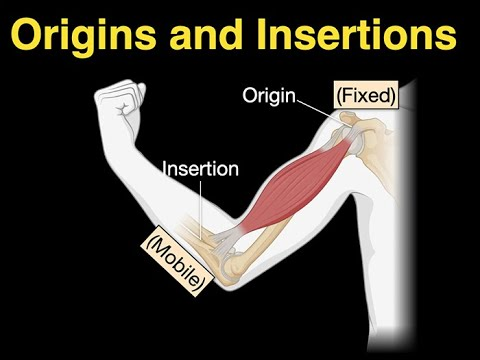
Insertion
the point where the muscle attaches to a bone, tendon, or other tissue that moves during muscle contraction, typically the distal end of the muscle
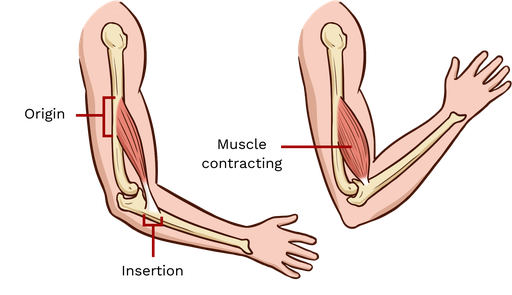
Action
refers to the movement produced by the contraction of a muscle. It describes the specific role a muscle plays in generating or resisting motion
Pronation
is rotation of the forearm and hand such
that the palm faces downward or backward (radius rotates over ulna)
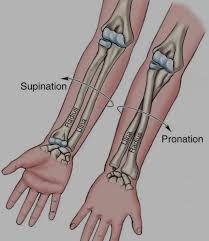
Supination
is rotation of the forearm and hand such
that the palm faces upward or forward (radius and ulna are parallel)
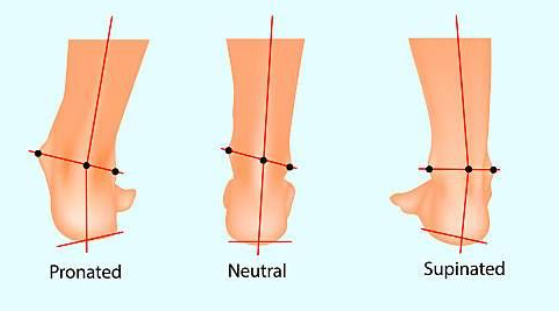
Flexion
decreases the angle of a joint, bringing one
bone closer to another bone.
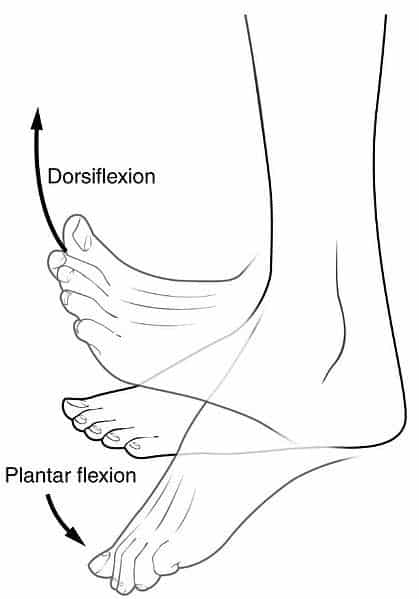
Extension
increases the angle of a joint, moving one
bone farther away from another bone.
Adduction
brings a structure closer to the midline. To
help keep them straight, remember that adduction
“adds” to the visible mass of the body.
Abduction
moves a structure away from the midline of
the body
Rotation
involves pivoting a bone along its long axis.
This term is specialized in the limbs to describe
rotation toward the midline (medial rotation) and away
from the midline (lateral rotation).
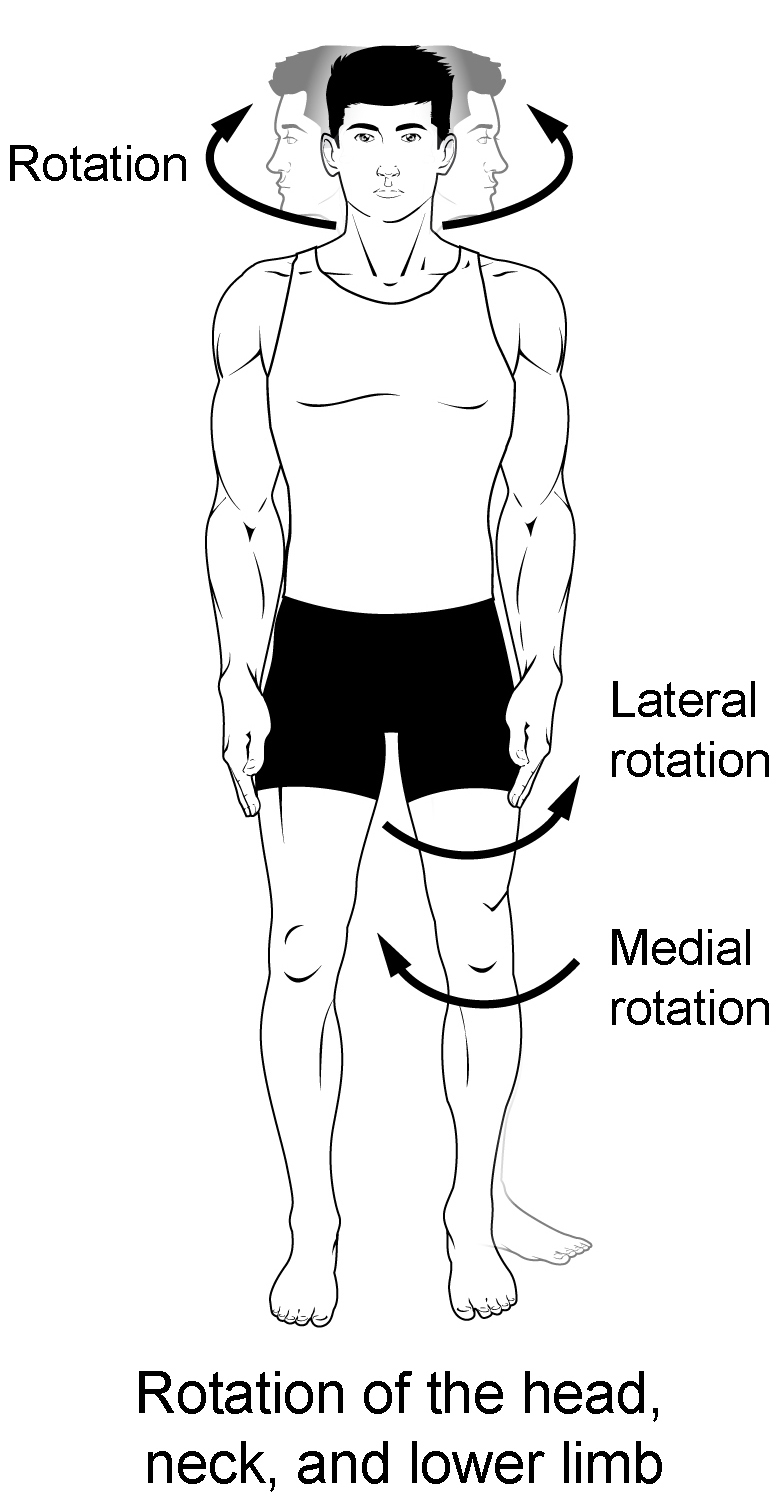
Elevation
lifts a bone superiorly. Shrugging the
shoulder is an example of elevation--in this case, of
the scapula.
Depression
drops a bone inferiorly.
Suture
The skull is composed of many bones that are fused
together by immovable joints called sutures (with the
exception of the mandible, which can move). These
bones are frequently grouped by region
Sagittal: Parietal to Parietal
Coronal: Frontal to Parietal
Squamous: Temporal to Parietal
Lambdoid: Occipital to Parietal
Occipitomastoid: Occipital to Tempora

Braincase
encloses the cavity that holds the
brain (8 bones-joined by sutures)
Facial Bones
involved in the
appearance of your external facial features (14)
Foramen/Foramina
This is a hole in the bone
that allows a nerve or blood vessel to travel through.
**Other words that indicate a hole in the bone are
canal, meatus and fissure. Fissures are not
rounded like the other three are
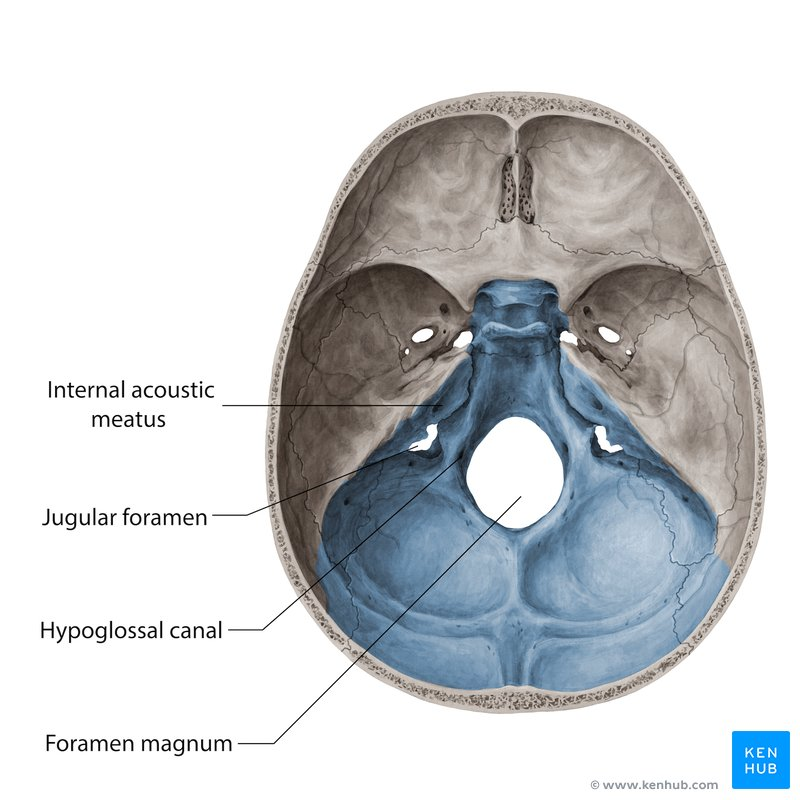
Process
a projection or outgrowth of tissue from a larger body, often serving for muscle attachment or articulation.
Fossa
An indentation in the bone. These
indentations serve a variety of functions

Plate
A flat extension of bone. Plates typically form
physical barriers
Striations
microscopic, alternating light and dark bands that are visible in certain types of muscle tissue under a microscope. They are formed by the regular arrangement of contractile proteins, actin and myosin, within the muscle fibers.
Agonist
(Prime Mover): The muscle that shortens
during a movement
Antagonist
The muscle that lengthens during a
movement
Synergist
A muscle that also shortens during a
movement in order to help the agonist
Fixator
A muscle that contracts in order to stabilize a
joint. These muscles often contract isometrically
Coactivation
the simultaneous contraction of agonist and antagonist muscles that cross the same joint